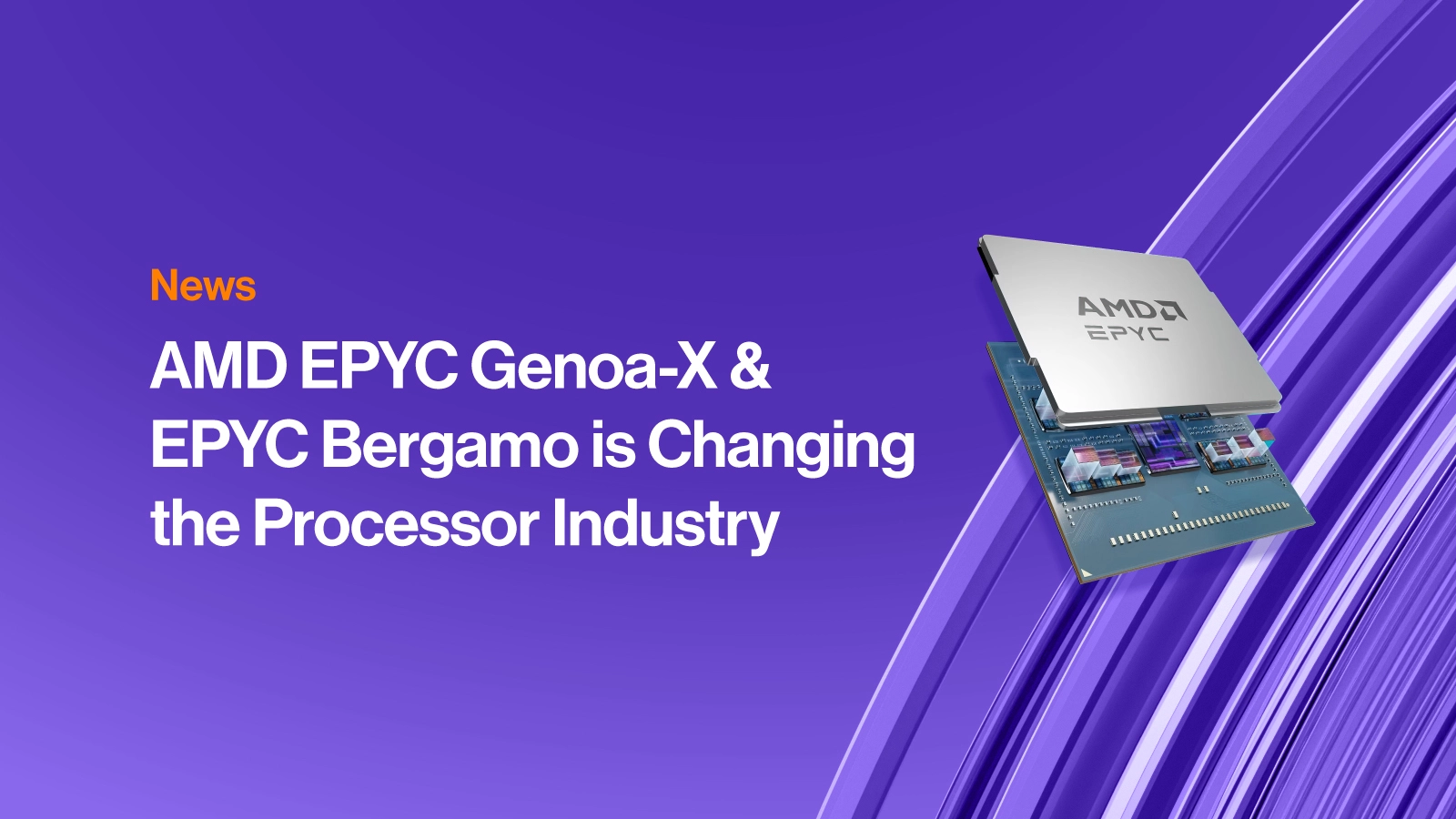The Newest Additions to the AMD EPYC Family
Last month, AMD announced at their AMD Data Center & AI Technology Premiere keynote the launch of the newest additions to the AMD EPYC 9004 family to address the computing needs of more industries. Featuring AMD EPYC Genoa-X that accelerated high performance technical computing and AMD EPYC Bergamo that tackles the dense workloads found in cloud computing.
Why AMD EPYC Genoa-X and More L3 Cache Matter?
AMD EPYC Genoa-X or 9004X is the successor to Milan-X or 7003X reintroducing the 3D V-Cache technology where additional L3 cache is stacked on top of the CCD. The stacked cache delivers more memory closer to the processor reducing latency bottleneck present when transfer data from RAM back and forth.
The new top SKU AMD EPYC 9684X features an additional 1.1GB of L3 cache. Applications that use a lot of data and operations that are calculation heavy can benefit from the cache. Workloads such as simulation, fluid dynamics, molecular dynamics, and AI & Deep Learning can benefit from the cache in EPYC 9004X. To address that market, AMD also released lower core count SKUs for enterprise applications that have a per core licensing pricing model.
SKU | Cores | Threads | L3 Cache | Boost Clock | Base Clock | TDP (W) |
|---|---|---|---|---|---|---|
AMD EPYC 9684X | 96 | 192 | 1152MB | 3.7GHz | 2.55GHz | 400W |
AMD EPYC 9384X | 32 | 64 | 768MB | 3.9GHz | 3.1GHz | 320W |
AMD EPYC 9184X | 16 | 32 | 768MB | 4.2GHz | 3.55GHz | 320W |
Similar to how last generation AMD Ryzen 5800X3D still shows up on gaming performance charts when compared to current generation desktop processors, the AMD 7003X is still a very sought after platform. While supply of last generation EPYC starts to run dry, AMD EPYC 9004X give companies and researchers the reason to upgrade, with more performance, more power, and the peace of mind knowing their platform will last.
Why AMD EPYC Bergamo Exist - Does More Cores Mean More Better?
AMD EPYC Bergamo adopts the opposite philosophy as EPYC Genoa. AMD EPYC Bergamo or 97X4 prioritizes core counts at the expense of cache size. The cache die on a CPU processor core takes up valuable space to fit on a single CCD. AMD EPYC 97X4 uses a smaller cut down Zen 4c core by cutting half the L3 cache. Zen 4c cores utilize the same micro architecture as normal Zen 4 cores so this is by no means AMD’s version of efficiency cores. AMD EPYC Bergamo’s top SKU graced us with 128 cores, the most cores ever found on an x86 processor only rivaled by an ARM processor, the Ampere Altra Max. Dual processor configurations with AMD EPYC 9754 reaches up to 256 cores and 512 threads.
SKU | Cores | Threads | L3 Cache | Boost Clock | Base Clock | TDP (W) |
|---|---|---|---|---|---|---|
AMD EPYC 9754 | 128 | 256 | 256 | 3.1GHz | 2.25GHz | 360 |
AMD EPYC 9754S | 128 | 128 | 256 | 3.1GHz | 2,25GHz | 360 |
AMD EPYC 9734 | 112 | 224 | 256 | 3.0GHz | 2.20GHz | 340 |
AMD EPYC Bergamo’s target applications are different from the applications that AMD EPYC Genoa-X are targeting; cloud virtualization workloads are not highly memory intensive, nor do they need exceptionally high clock speeds. Instead, virtualization applications are just a bunch of small tasks that can be accelerated with more cores. Running a large amount of low intensity web applications, virtual machines, and software as a service (SaaS) workload can benefit from the additional cores.
Final Thoughts
AMD is definitely changing how their SKUs differentiate from one another, and it's not just by core density, clock speeds, and other small changes done to a CPU die. Instead, the underlying architecture of each EPYC line is unique to accomplish unique tasks.
- AMD EPYC 9004 retain high clock speeds for general purpose HPC that prioritize per core performance.
- AMD EPYC 9004X increases the L3 cache size in exchange for slightly lower clock speeds to maintain stability. The additional cache will more than make up in performance for memory intensive workloads.
- AMD EPYC 97X4 reduces cache in exchange for increased core counts. More cores is good for workloads that have a lot of smaller light tasks, similar to tasks found in cloud virtualization where each mini task can be distributed to each core.
Each EPYC processor satisfies each workload and choosing them has never been easier! At SabrePC, we are excited to soon have server platforms to support the new AMD EPYC Genoa-X and EPYC Bergamo.
Have any questions? Contact Us today for more information!
Check out SabrePC’s AMD EPYC 9004 platform of servers.


